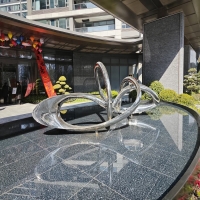Welcome to the website for landscape facilities products and knowledge.
How does the table’s design account for compatibility with outdoor rugs or flooring?
When selecting outdoor furniture, particularly tables, their compatibility with different outdoor surfaces becomes crucial for both functionality and aesthetics. Modern outdoor table designs incorporate several key features that ensure harmonious integration with various outdoor rugs and flooring types.
The foundation of compatibility begins with adjustable feet or leveling mechanisms. These innovative components allow the table to maintain perfect stability on uneven surfaces, whether placed directly on stone pavers, wooden decks, or thick outdoor rugs. Manufacturers specifically design these adjustment systems to prevent wobbling and ensure safety, even when the table spans multiple surface types.
Material selection plays an equally important role in compatibility. Tables constructed from weather-resistant materials like powder-coated aluminum, teak, or synthetic wicker often feature protective coatings on their bases and legs. These coatings prevent chemical reactions or color transfers that could damage delicate outdoor rug fibers or specific flooring materials. The finishes are typically smooth and non-abrasive, protecting both the table and the surface beneath from scratches and wear.
The structural design of table legs and bases demonstrates careful consideration for surface compatibility. Many contemporary outdoor tables feature wider leg bases or additional cross-support systems that distribute weight more evenly. This design approach prevents excessive pressure points that could potentially damage outdoor rugs or leave permanent indentations in softer flooring materials. For tables intended specifically for rug use, designers often incorporate rounded leg bottoms or protective caps that minimize direct contact with rug fibers.
Height clearance represents another critical design element. Designers ensure sufficient space between the table's lower framework and the ground to accommodate various rug thicknesses. This foresight prevents the table from pressing too firmly against the rug surface, which could lead to premature wear or difficulty in cleaning beneath the furniture.
Integration features extend to practical considerations as well. Some table designs include built-in measurement guides or compatibility indicators that help consumers determine appropriate rug sizes and thickness levels. This attention to detail demonstrates how manufacturers anticipate real-world usage scenarios where tables and rugs must coexist seamlessly.
The evolution of outdoor table design continues to focus on universal compatibility, acknowledging that consumers frequently rearrange their outdoor spaces and may change flooring elements over time. By incorporating these thoughtful design elements, modern outdoor tables not only enhance outdoor living experiences but also protect the investment homeowners make in their outdoor rugs and flooring surfaces.
Related search:

Recommendation
Abstract art sculpture, stainless steel metal sculpture, large-scale water feature sculpture